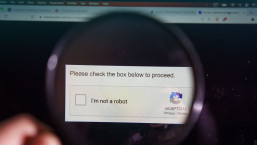It’s a scene of almost unimaginable horror courtesy of 2014's hacking predictions. A Japanese salaryman sits down on his e-toilet (popular for their health-monitoring sensors) - and meanwhile a cackling hacker waits.
Once the salaryman has completed his business, the hacker takes control - the flush will not work, and even the lid will not close on his shame.
These are the sort of scenes of terror filling hacking predictions as ‘the next wave’ of hacking - but with criminals already making a comfortable living pillaging bank accounts, tinkering with flushes somehow seems a step down the ladder.
Tech pundits seem inclined to make these hacking predictions - of cars being “cyberjacked”, for instance, although it is currently impossible to do so without attaching large, complex devices to them first. And if one’s able to do that, why not just plant a bomb?
They’re guaranteed click-bait, though - and below, we compile some of the deadliest, most murderous death machines ever to (theoretically) emerge from the Internet of Things.
Hacking 2.0
Veteran security researcher and writer Graham Cluley feels unthreatened - and uninterested - by these connected devices - and unconvinced that Hollywood will turn its hand to horror films based on murderous white goods - ‘Heartbreak Fridge’ perhaps?
“Yes, of course there are threats associated with more devices connecting to the internet,” says Cluley. “Especially when they are built by companies who may not be well versed in computer security.”
“Although none of us should be complacent about the potential risks, there is perhaps more hype than havoc at the moment.
“I, for one, am not drooling at the thought of having an internet fridge. Not because of the potential security risks, but simply because I can't imagine how having an internet-enabled fridge would make my life in any way happier or more convenient.”
E-toilets: A new way to kill?
Like many companies in the technology world, Rod Rassmussen peered into his crystal ball to predict likely events in 2014 - Rasmussen being the highly respected President and CTO of IID. Rassmussen headed straight out for the territory where the buses don’t run - and predicted a murder using an internet-connected device. “Killings can be carried out with a significantly lower chance of getting caught, much less convicted, and if human history shows us anything, if you can find a new way to kill, it will be eventually be used.” Being slammed in a toilet lid can sting - but is it really deadly?
Flushed to death?
At last year’s Black conference in Las Vegas, various terrifying hacks - such as the ability to peer through home security cameras - were shown off, but it was the demonstration of an e-toilet hack which ran off with the headlines. Terrified victims of the hack against Satis toilets could be assaulted with a remote-controlled flush - or even a blast from the bidet. Hackers can also use the app to control the air-drying functions at will, “causing discomfort” Ars Technica warned with tongue firmly in cheek.
Knock, knock, Hue’s there?
Terrifying headlines around the world greeted the news that it was possible to remote-control Philips Hue lighting system due to flaws in its online ‘control panel’. What these reports failed to mention, of course, is that Hue is more akin to a lava lamp than a home lighting system, with colours that flicker to match films on TV, or just to create a nice warm glow. Gizmodo warned that they are “highly hackable”. Surely it’s easier simply to run outside and jingle their wind chimes to ruin the ‘vibe’?
White goods - black heart?
The scene in Ghostbusters where Sigourney Weaver opens her fridge to reveal a portal into a demonic underworld came true this year. Well, nearly. Reports of a fridge sending huge volumes of spam (the email kind, not the meat product) swept the web’s more credulous regions - with some reports claiming that other businesses had been targeted by the rogue chiller cabinet - until someone pointed out a nearby Windows PC was the culprit. The fridge has since been cleared of all charges.




